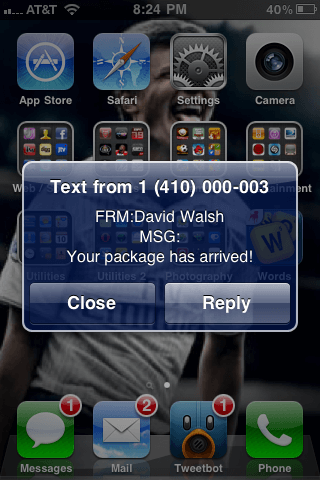Font Loading Techniques
This post is a work in progress and will be updated over time. Some techniques are browser-specific and experimental. Thank you for looking!
It seems as though most websites use non-default fonts these days and who can blame them? System fonts are all pretty boring and custom fonts add a bit of flare and freshness to a site's design. The problem with using custom fonts, however, is they can really slow down your site load. Font files are large, can require separate font files for bold and italic, and can block rendering if the developer doesn't work around them. Let me show you a strategy for faster font loading!
1. Put Fonts on CDN
One simple solution for improving site speed is using a CDN, and that's no different for fonts. It's important to ensure the CDN has proper CORS settings, as I discussed in Service Fonts from CDN:
# Apache config
<FilesMatch ".(eot|ttf|otf|woff)">
Header set Access-Control-Allow-Origin "*"
</FilesMatch>
# nginx config
if ($filename ~* ^.*?\.(eot)|(ttf)|(woff)$){
add_header Access-Control-Allow-Origin *;
}
You'll see AJAX / cross-domain errors in the console if the CDN's CORS settings are not properly configured.
2. Use Non-Blocking CSS Loading
My Mozilla colleague Stephanie Hobson shared Loading CSS without blocking render with me, which outlines a strategy for preventing CSS loading from blocking render. It's actually genius:
<link rel="stylesheet" type="text/css" href="fonts.css" media="none" onload="this.media='all';"> <link rel="stylesheet" type="text/css" href="style.css" media="none" onload="this.media='all';">
Essentially using media=none let's the browser download the stylesheet without blocking rendering, so when the stylesheet has loaded, setting the media to its desired setting will then render the screen as it should. Nice!
Note: I've had a few issues with this technique within Firefox but I've not yet figured out the exact reasoning for it, as sometimes no issue occurs. Read Keith Clark's post for precise details and support.
3. Separate Font Selectors
If a font hasn't loaded by the time it's used, the user will see (nothing, kind of) empty space until the font has loaded. This is, of course, not good if the fonts fail to load. At the very least, the user will be burdened with staring at empty space for a few seconds. What's best is keeping custom font declarations protected with a class that is added to the body after the fonts have loaded:
h1 { font-family: Arial, serif; } /* basic system font */
.fontsloaded h1 { font-family: 'MySpecialFont', serif; } /* custom system font */
<link href="fonts.css" onload="document.body.className+=' fontsloaded';" rel="stylesheet" type="text/css" >
By using the font declaration strategy above, a system font is loaded initially and only after the custom font is loaded will it be enabled, thus the screen wont show empty content for any period of time. I recommend creating a Stylus/Sass/Less mixin to set the font-family settings so that the custom selector is automatically set.
Scott Jehl describes that font load events are much more effective in his post Font Loading Revisited with Font Events. Please read it!
4. Storing Fonts in localStorage
Did you know you can store fonts in localStorage?! Crazy, right?! Check out this post which details the process and even provides the code to do it!
Speed kills on the web and the strategies provided above will supercharge your custom font loading and CSS speed. The solutions are all easy to implement, you just need to take the time!





Thanks for the apache code example.
It’s a small thing but helps a lot.
Thanks ! Very cool!
But, it must be one more – put css with font dataUri to locastorage.
Will it improve if we put css with font dataUri to locastorage?
Yes. Google page speed up to 100%. All have any disadvantages.
Very nice article, but I don’t really get it, does the “separate font selector” allow some sort of font lazy-loading?
Yes, it does. Browsers (i.e. smart browsers) won’t load the fonts when they are not used in a
font-familyproperty. Even when the font is used in afont-familyproperty and the target elements do not exist, the font is not loaded.I don’t think
media=noneis a good way to download css as unstyled HTML appears on the webpage for a duration which is visible to naked eye.> I don’t think media=none is a good way to download css as unstyled HTML appears on the webpage for a duration which is visible to naked eye.
Understood, but that is why you only use media=none on the font stylesheet (use a separate stylesheet, it’s probably worth the extra request). You should style your site to be tolerable with out @fontface anyways, as some browsers like Opera Mini don’t load web fonts and never will.
Think of it this way. Without deferring the font it will block the rendering of entire page. If I’m a blind user on a screen reader, why are you making me wait for content until something that isn’t relevant to me, and is a large file size, downloads?